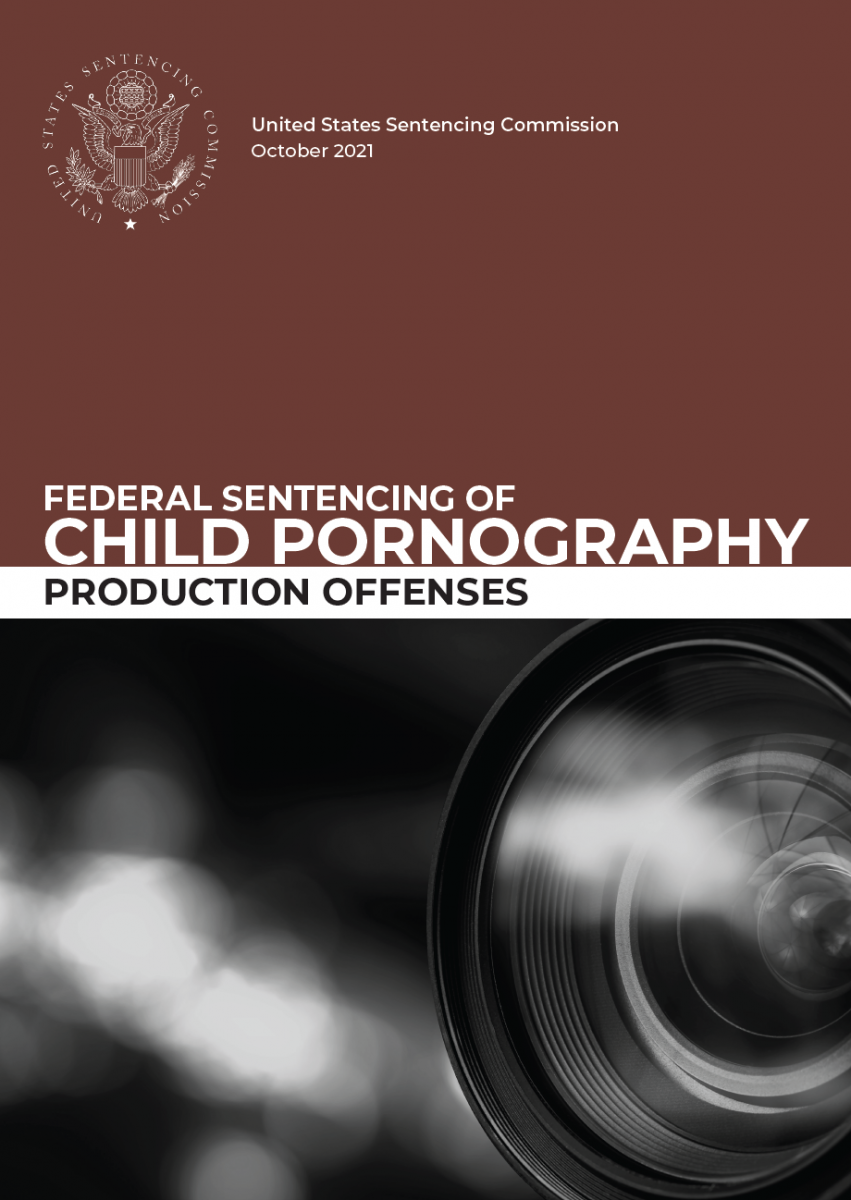Overview

A previous report analyzed offenders sentenced under the guideline for non-production of child pornography offenses.
Related Materials
- Federal Sentencing of Child Pornography: Non-Production Offenses (2021)
- Report to the Congress: Federal Child Pornography Offenses (2012)
- The History of the Child Pornography Guidelines (2009)
Key Findings
- Although child pornography production cases comprise a small percentage of the overall federal caseload, the expansion of digital and mobile technology has contributed to a 422 percent increase in the number of production offenders sentenced over a 15-year period, from 98 offenders in fiscal year 2005 to 512 offenders in fiscal year 2019.
- Child pornography production offenders generally received lengthy sentences. In fiscal year 2019, production offenders received an average sentence of almost 23 years of imprisonment (275 months), ranging from one year to life imprisonment. Furthermore, over three-quarters (78.0%) were convicted under a statute carrying at least a 15-year mandatory minimum penalty. Most child pornography production offenders, however, received a variance below the applicable guideline range (57.2% of the 512 cases).
- A majority (56.6%) of child pornography production cases sentenced in fiscal year 2019 involved a single victim. However, a substantial minority of cases (41.0%) involved more than one minor victim, ranging from two to 440 victims.
- The typical production offender maintains a position of trust over the victim and has physical access to the child during the production of child pornography. Of the 512 child pornography production offenders sentenced in fiscal year 2019, 60.3 percent were related to or otherwise maintained a position of trust over the minor victim, whether through familial relationships or by virtue of the offender’s role as a teacher or a coach, for example.
- Due to technological advancements and the changing nature of production offenses, an increasing proportion of production offenders exploit victims remotely through use of the internet or mobile devices. For example, over one-third (35.4%) of production offenders sentenced in fiscal year 2019 were internet strangers who met their victims through an online platform, more than double the proportion of offenders sentenced in fiscal year 2010 who met their victims online (14.3%).
-
Child pornography production offenders who were in closer proximity to their victims—those who communicated with them in person—victimized younger children compared to production offenders who communicated remotely.
- Among offenders who communicated with their victims in person, the youngest victim in the vast majority of cases was age 12 or younger (83.5%), which included infants or toddlers in nearly one-third of the cases (30.3%).
- Conversely, the youngest victim for nearly two-thirds (61.7%) of remote child pornography production offenders’ victims were teenagers, who were more likely to have access to the internet, cell phones, or social media.
- The vast majority of fiscal year 2019 child pornography production offenders (80.9%) were sentenced for an offense that involved sexual contact of a minor.
- Of the 512 child pornography production offenders sentenced in fiscal year 2019, 40 percent incapacitated, coerced, or enticed a victim, or misrepresented their identity to a victim to facilitate the offense.
-
Although the average sentence imposed was lengthy for child pornography production offenders (275 months), courts imposed longer sentences (averaging over 300 months) on offenders who:
- victimized infants or toddlers (average sentences of 364 months and 330 months, respectively);
- were parents of victims (340 months, on average);
- engaged in or facilitated the sexual contact of a minor during the offense (307 months, on average); or
- incapacitated victims (313 months, on average).

